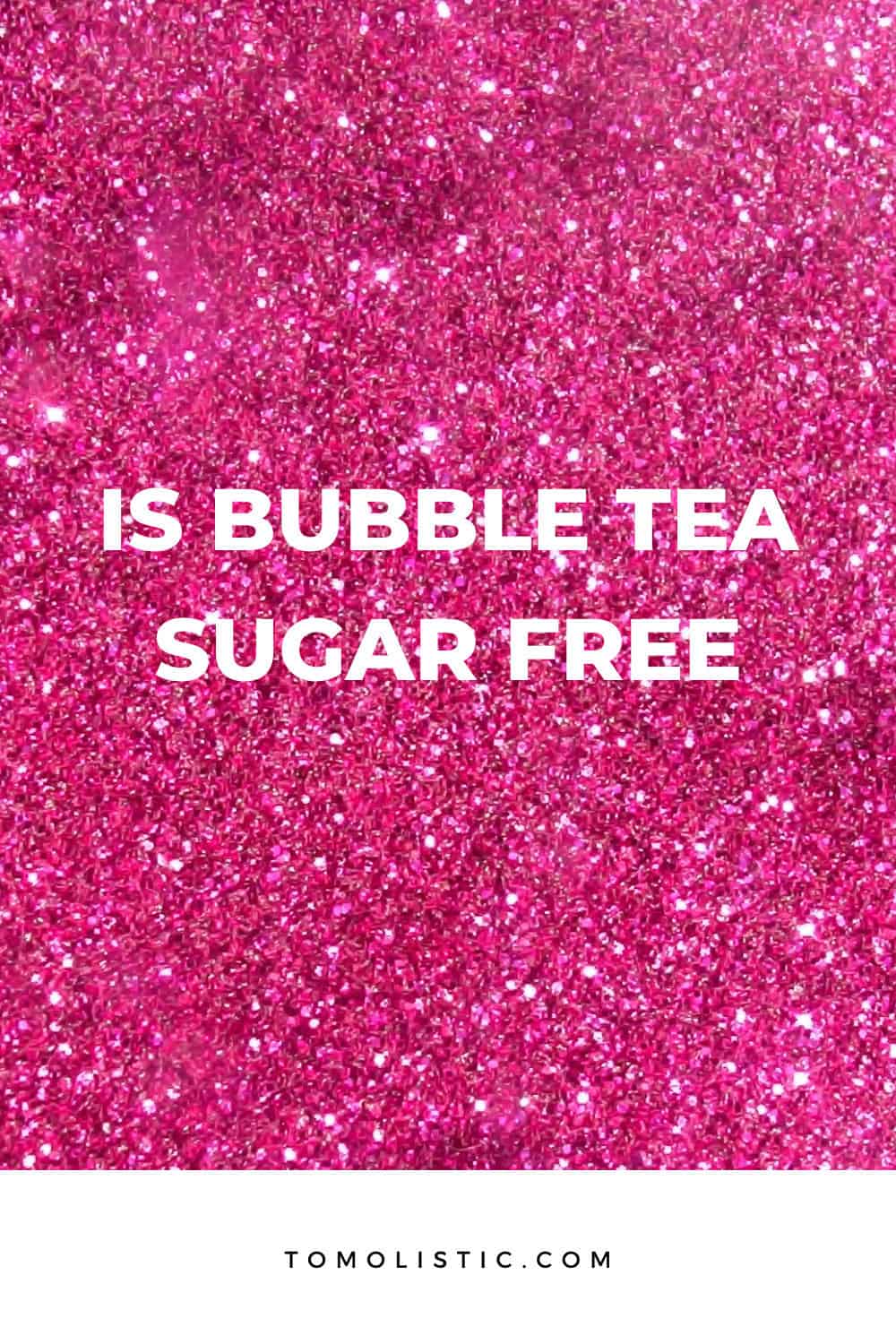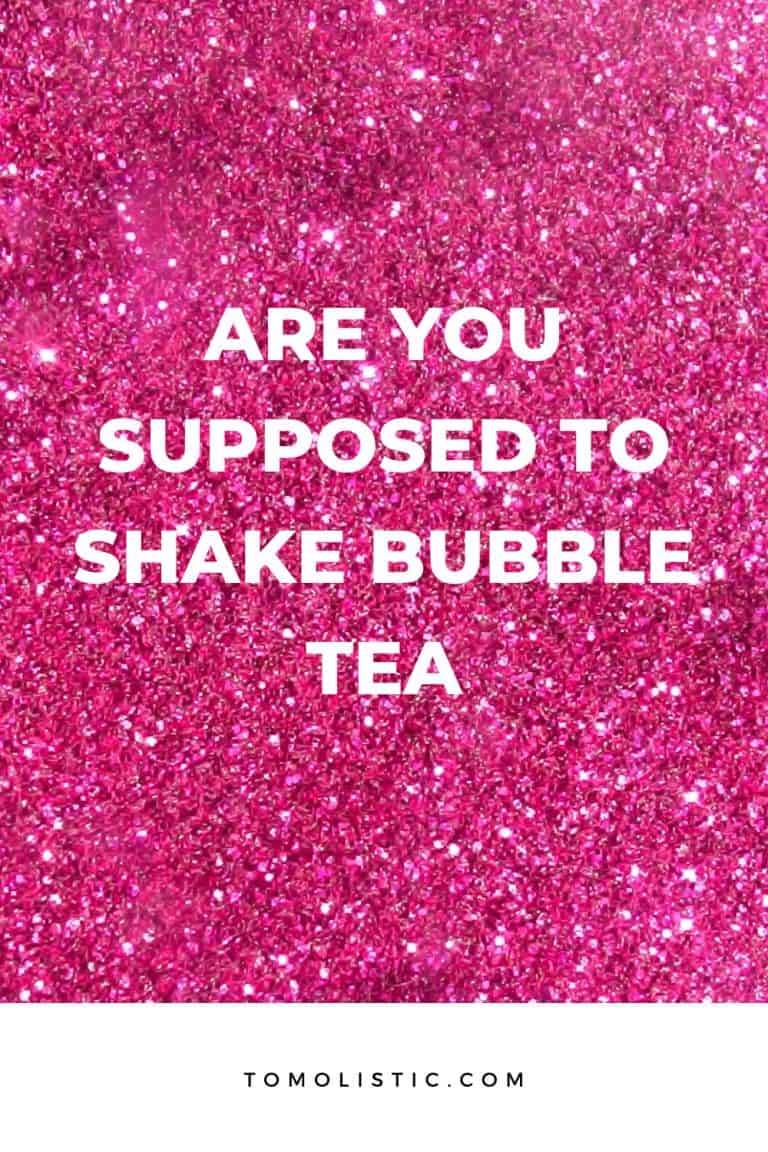Is Bubble Tea Really Sugar Free?
Is bubble tea sugar-free? If you’ve ever pondered this question while sipping on your favorite tapioca-infused beverage, you’re not alone. Bubble tea has taken the world by storm with its myriad of flavors and textures, but when it comes to sugar content, there seems to be a bit of confusion.
In this blog post, we’re going to delve into the world of bubble tea and explore whether or not it can truly be considered sugar-free. From the basic ingredients to popular variations, we’ll uncover the truth behind this beloved drink and help you make more informed decisions next time you’re craving a refreshing cup of bubble tea.
So, if you’re ready to uncover the mysteries surrounding bubble tea and its sugar content, let’s embark on this sweet yet informative journey together.
Understanding Bubble Tea and its Ingredients
Bubble tea, also known as boba tea, is a popular drink that originated in Taiwan in the 1980s but has since gained worldwide popularity. It is a unique beverage that combines a tea base with milk or fruit flavors and chewy tapioca pearls or other add-ins.
What is Bubble Tea?
Bubble tea typically consists of a base tea, milk, or fruit flavors, sweeteners, and add-ins like tapioca pearls or fruit jellies. The drink can be served hot or cold, with or without ice, and comes in a variety of flavors such as classic milk tea, fruit teas, and slushies. One of the most distinctive features of bubble tea is the oversized straw used to sip up the chewy tapioca pearls or other toppings.
Common Ingredients in Bubble Tea
The common ingredients found in bubble tea include:
- Tea Base: Black tea, green tea, oolong tea, and herbal teas are commonly used as the base for bubble tea.
- Milk or Non-Dairy Alternatives: Some variations of bubble tea include dairy milk, condensed milk, creamer, or non-dairy alternatives like almond milk or coconut milk.
- Sweeteners: Sugar, honey, or syrup are often added to sweeten the drink. Some recipes may use flavored syrups for added sweetness.
- Tapioca Pearls: Tapioca pearls, also known as boba, are made from cassava starch and provide a chewy texture to the drink.
- Fruit Jellies: Fruit jellies in various flavors such as mango, lychee, or strawberry are popular additions to fruit teas.
- Toppings: Other toppings like aloe vera, pudding, or popping boba can be added for additional texture and flavor.
Bubble tea is a customizable drink, allowing customers to choose their preferred tea, sweetness level, and toppings. The combination of ingredients creates a fun and flavorful beverage experience that has captivated bubble tea enthusiasts around the world.
Sugar Content in Bubble Tea
Bubble tea is a popular drink that comes in various flavors and types. One common concern among bubble tea enthusiasts is the sugar content in this beloved beverage. Let’s delve into the details of sugar content in bubble tea, comparing traditional bubble tea with modern variations and exploring the role of sweeteners in this sweet treat.
Traditional Bubble Tea vs. Modern Variations
Traditional bubble tea is typically made with a base of black or green tea, sweetened with sugar, and mixed with milk. Tapioca pearls, also known as boba, are added to give the drink its signature chewy texture. In its classic form, traditional bubble tea can contain a significant amount of sugar due to the sweetened milk and added syrups.
On the other hand, modern variations of bubble tea offer a wider range of options, including fruit teas, milk teas, and slushies. These contemporary twists on the classic drink come in an array of flavors and allow for customization in sweetness levels. While some modern bubble teas may use artificial sweeteners or lower sugar options, others may still have high sugar content depending on the ingredients and preparation methods.
The Role of Sweeteners in Bubble Tea
Sweeteners play a crucial role in determining the sugar content of bubble tea. Traditional bubble tea commonly uses simple syrups, condensed milk, or flavored powders to sweeten the drink. These sweetening agents contribute to the overall sugar content of the beverage, making it a sugary indulgence for many.
In modern variations of bubble tea, sweeteners can vary widely. Some establishments offer sugar-free or low-sugar options for health-conscious consumers. Others use natural sweeteners like honey or agave syrup as alternatives to traditional sugar. It’s essential for bubble tea enthusiasts to be mindful of the sweeteners used in their drink of choice and opt for lower sugar alternatives if they are watching their sugar intake.
When enjoying bubble tea, it’s important to consider the sugar content and make informed choices based on personal preferences and dietary needs. Whether sipping on a classic bubble tea or trying out a modern variation, being aware of the sweeteners in your drink can help you enjoy this delightful beverage in a way that suits your taste and health goals.
Is Bubble Tea Sugar Free?
In the quest to understand the sugar content of bubble tea, it’s essential to delve into the factors influencing the sweetness of this beloved beverage.
Examining Sugar Levels in Bubble Tea
Bubble tea, also known as Boba tea, is a delightful concoction that blends tea with various flavors and toppings. However, the sugar content can vary significantly depending on how it’s prepared. The sweetness in bubble tea primarily comes from ingredients like flavored syrups, sweetened condensed milk, and tapioca pearls. These additives can contribute to higher sugar levels in your bubble tea order.
Factors Influencing Sugar Content in Bubble Tea
The sugar content in bubble tea can be influenced by several factors, including the type of tea used as the base, the amount of sweeteners added, and the toppings chosen. Fruit-flavored bubble teas are often sweetened with additional syrups, increasing the sugar content. Opting for milk teas or plain teas without added sweeteners can help lower the sugar levels in your beverage.
Understanding the sugar content in bubble tea is crucial for those looking to make healthier choices. By being mindful of the ingredients and preparation methods, you can enjoy your bubble tea while keeping an eye on your sugar intake.
Healthy Alternatives and Tips
Thinking about your bubble tea intake but concerned about the sugar content? Here are some healthy alternatives and tips to help you enjoy your favorite beverage without overloading on sugar.
Choosing Low Sugar Bubble Tea Options
- Opt for Unsweetened Tea: Choose a base of unsweetened tea to significantly reduce the sugar content of your bubble tea. This allows you to control the sweetness level by adding natural sweeteners or less sugar syrup.
- Choose Sugar-Free Syrups: Some bubble tea shops offer sugar-free syrups as an alternative to the traditional sweetened syrups. These syrups can help cut down on the overall sugar content while still adding flavor to your drink.
- Go for Fresh Fruit: Instead of artificial flavorings, opt for bubble tea with fresh fruit toppings or fruit purees. This adds natural sweetness without the need for extra sugar or syrups.
- Ask for Less Sweetness: When ordering your bubble tea, don’t hesitate to ask for less sugar or sweeteners. Most bubble tea shops are willing to customize the sweetness level based on your preference.
DIY Bubble Tea with Less Sugar
- Use Unsweetened Tea: When making bubble tea at home, start with unsweetened tea as the base. This allows you to control the sugar content and experiment with different sweeteners like honey, agave, or stevia.
- Natural Sweeteners: Consider using natural sweeteners like honey, maple syrup, or agave nectar instead of processed sugars. These alternatives can add sweetness to your bubble tea without the drawbacks of refined sugar.
- Fresh Ingredients: Incorporate fresh fruits, such as berries, mango, or passion fruit, into your DIY bubble tea. These fruits add natural sweetness and a burst of flavor without the need for added sugars.
- Limit Toppings: While toppings like tapioca pearls or jelly add fun textures to bubble tea, they can also contribute to the overall sugar content. Consider reducing the amount of toppings or opting for healthier alternatives like chia seeds or aloe vera.
By making informed choices and exploring creative alternatives, you can enjoy bubble tea while keeping sugar levels in check. Experiment with different ingredients and customization options to find a healthier balance that suits your taste buds.
How Much Sugar Is in Bubble Tea
Bubble tea is a popular drink that comes in various flavors and types, but one key consideration for many is the amount of sugar it contains. Let’s delve into how much sugar is typically found in bubble tea to help you make informed choices.
Understanding Sugar Content in Bubble Tea
Bubble tea can vary significantly in its sugar content based on the ingredients used and how it’s prepared. Typically, the sweetness of bubble tea comes from ingredients like flavored syrups, fruit purees, condensed milk, or sweetened dairy alternatives. These ingredients contribute to the overall sugar content of the drink.
Average Sugar Levels in Bubble Tea
On average, a serving of bubble tea can contain anywhere from 20 to 50 grams of sugar, depending on the size, flavor, and additional toppings like tapioca pearls or jelly. To put this into perspective, the American Heart Association recommends a daily limit of no more than 36 grams for men and 25 grams for women.
Tips for Reducing Sugar in Your Bubble Tea
If you’re looking to enjoy bubble tea with less sugar, there are a few tips you can consider:
- Opt for unsweetened or less sweetened versions of bubble tea flavors.
- Choose alternative sweeteners like stevia or monk fruit if available.
- Requesting half-sugar or less sugar when ordering your bubble tea.
- Selecting smaller sizes to reduce overall sugar intake.
The Impact of Sugar in Bubble Tea
Consuming excessive amounts of sugar regularly can contribute to various health concerns, including weight gain, tooth decay, and an increased risk of chronic conditions like diabetes and heart disease. Being mindful of your sugar intake from bubble tea and other sources can support overall health and well-being.
Final Thoughts
Bubble tea, with its myriad flavors and textures, has captured the hearts of many around the world. As you navigate the world of bubble tea choices, it’s essential to consider the sugar content in these delightful beverages. While some options can be enjoyed with lower sugar levels or sugar-free alternatives, it’s crucial to be mindful of your overall sugar intake and make informed choices based on your dietary needs and preferences.
Embrace Variety and Moderation
When it comes to indulging in bubble tea, embracing variety and moderation can be key. Opting for sugar-free or lower sugar versions of your favorite bubble tea flavors can help you enjoy these treats while being mindful of your sugar intake. Additionally, incorporating bubble tea as an occasional indulgence in an otherwise balanced diet can enhance your overall enjoyment without compromising your health goals.
Be Informed and Mindful
Being informed about the sugar content of different bubble tea options and understanding how these choices fit into your overall dietary intake can empower you to make conscious decisions that align with your wellness goals. Whether you choose to savor a classic bubble tea with its traditional sugar content or opt for a customized, sugar-free variation, being mindful of your selections can contribute to a more enjoyable and health-conscious bubble tea experience.
Enjoy the Bubble Tea Journey
Ultimately, the world of bubble tea offers a delightful journey of flavors, textures, and experiences to explore. Whether you’re a devoted bubble tea enthusiast or a newcomer eager to discover the wonders of this beloved beverage, embracing the diversity of bubble tea options with a thoughtful approach can enhance your enjoyment and appreciation for this popular drink. So go ahead, savor the bubbling delights of bubble tea, and relish in the myriad of choices that cater to your taste preferences and dietary needs.

